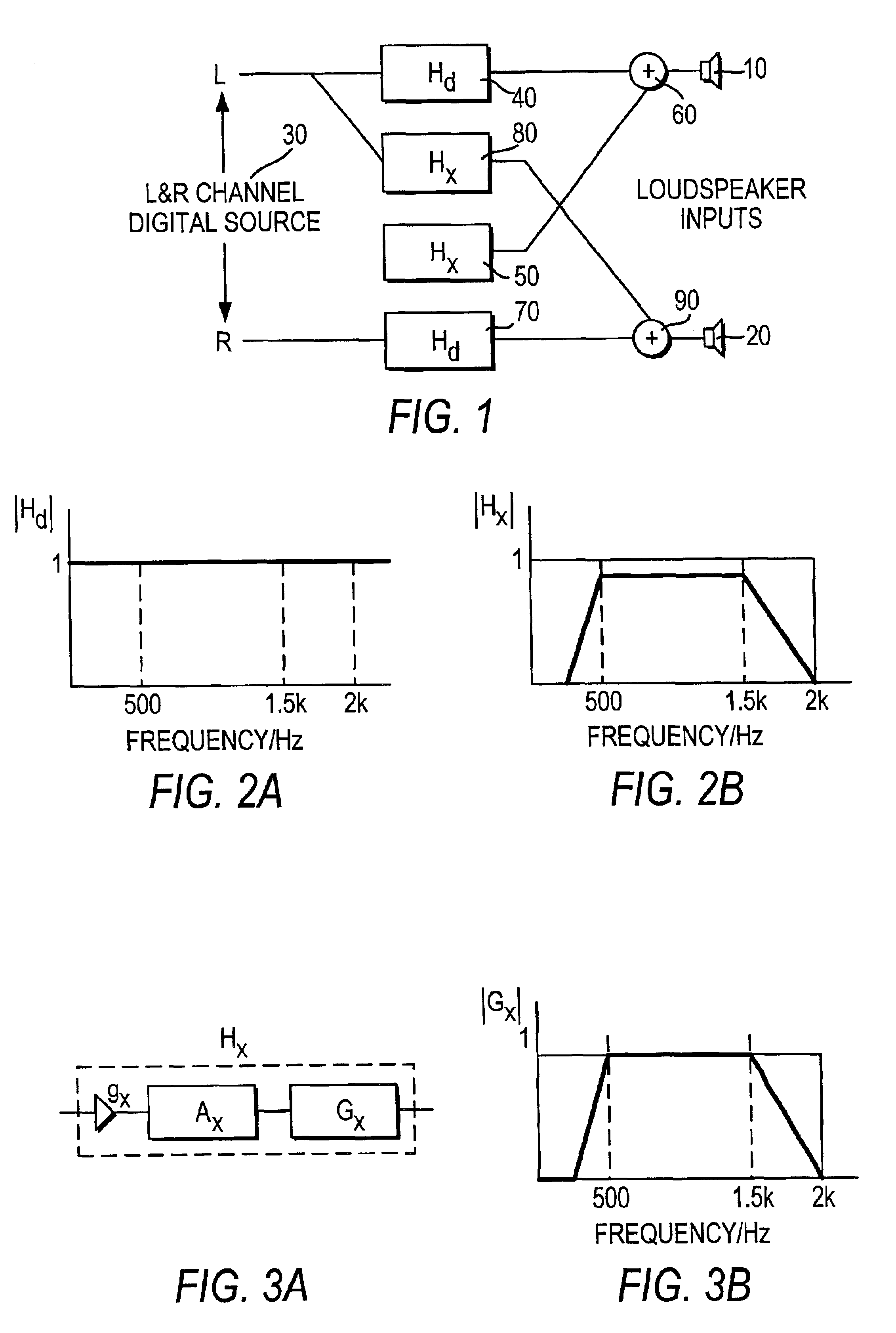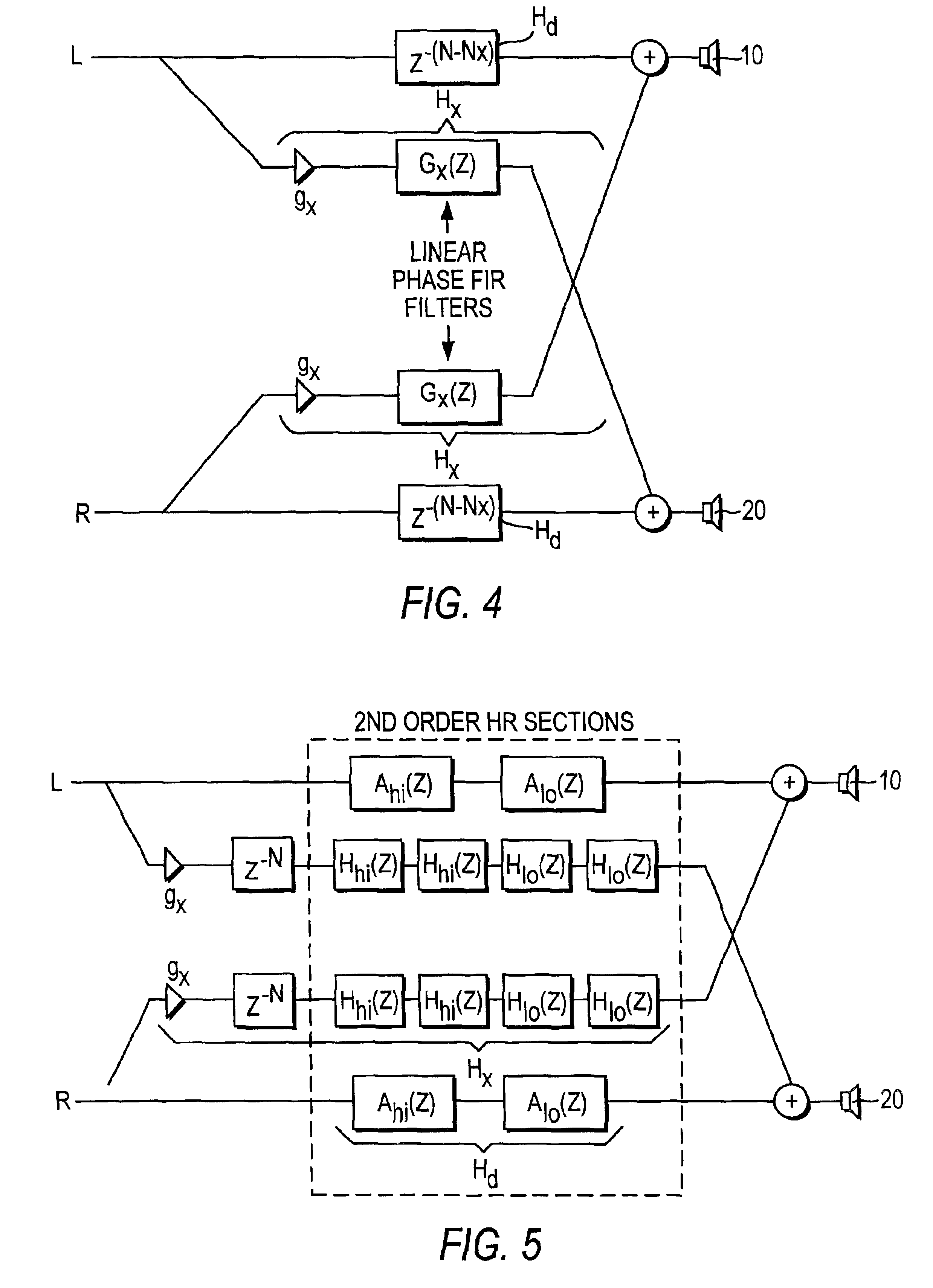Transparent stereo widening algorithm for loudspeakers
a stereo widening and loudspeaker technology, applied in stereophonic systems, stereophonic arrangments, electrical apparatus, etc., can solve the problems of low spatial fidelity of sum-difference processors, easy implementation, and blurred sound stage in a way that is generally perceived as undesirabl
- Summary
- Abstract
- Description
- Claims
- Application Information
AI Technical Summary
Benefits of technology
Problems solved by technology
Method used
Image
Examples
Embodiment Construction
[0025]FIG. 1 shows in block form the general structure of a stereo widening network according to the prior art as well as the present invention. The network, which is generally implemented on a digital signal processor (DSP), comprises left and right loudspeakers 10, 20. A digital audio source 30 has separate audio inputs L and R for left and right channels, respectively. (The sound stage can also be widened by placing an additional set of loudspeakers behind a listener.) The audio source 30 is input as a stream that may comprise a live digital audio signal or a digital audio recording stored in any format and on any media. For example, audio source 30 may be an audio signal stored on a DVD, or in the MP3 format. As another example, audio source 30 may be an audio signal that is a soundtrack to a movie, television, or is part of any multimedia program.
[0026]A left channel of audio source 30 is input at left channel input L and a right channel of audio source 30 is input at right cha...
PUM
 Login to View More
Login to View More Abstract
Description
Claims
Application Information
 Login to View More
Login to View More - R&D
- Intellectual Property
- Life Sciences
- Materials
- Tech Scout
- Unparalleled Data Quality
- Higher Quality Content
- 60% Fewer Hallucinations
Browse by: Latest US Patents, China's latest patents, Technical Efficacy Thesaurus, Application Domain, Technology Topic, Popular Technical Reports.
© 2025 PatSnap. All rights reserved.Legal|Privacy policy|Modern Slavery Act Transparency Statement|Sitemap|About US| Contact US: help@patsnap.com



